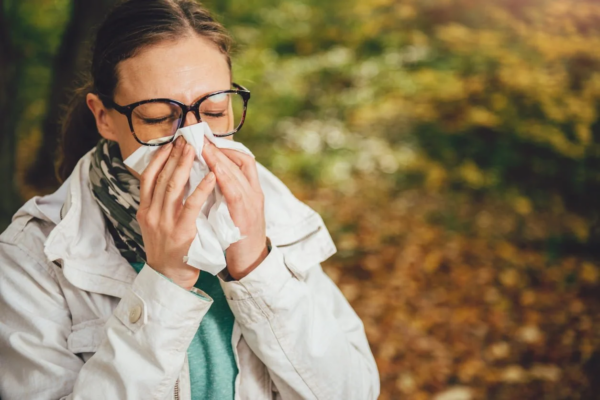Why Do We Catch a Cold When It's Cold Outside?
As we cozy up indoors and brace ourselves against the chill of winter, it's hard to ignore the fact that sniffles and sneezes seem to be in the air more often. But have you ever stopped to wonder why we catch more colds when the weather turns chilly? Let's delve deeper into the science behind this seasonal phenomenon and uncover why cooler temperatures might make us more prone to catching a cold.

The Intricacies of Nasal Cavity Defense
Our nasal cavity is truly a marvel of nature's design—a sophisticated fortress that protects us from invading germs. At the heart of this defense system lies a specialized mucous membrane lining the nasal passages. This membrane produces mucus—a thick, sticky substance that serves as our body's first line of defense against airborne pathogens. Think of mucus as a sticky trap, catching bacteria, viruses, and other harmful particles before they have a chance to enter our respiratory system.
But mucus alone isn't enough to keep us healthy. Enter the nasal cilia—microscopic hair-like structures that line the nasal passages. These cilia beat rhythmically, sweeping the trapped particles along with the mucus towards the back of the throat, where they can be swallowed or expelled. This constant motion helps to keep our airways clear and free from debris, allowing us to breathe easy.
The Impact of Cooler Temperatures on Nasal Health
When the mercury drops and winter settles in, our nasal defense system faces a series of challenges. Firstly, cold air tends to be drier, robbing our mucous membranes of essential moisture. As a result, the mucus becomes thicker and less effective at trapping germs, leaving us more vulnerable to infection.
Additionally, the cold temperatures can cause the blood vessels in our nasal passages to constrict—a phenomenon known as vasoconstriction. This reduction in blood flow limits the delivery of essential nutrients and immune cells to the nasal tissues, impairing their ability to mount an effective defense against invading pathogens.
Furthermore, vasoconstriction can lead to a decrease in mucus production, further compromising our body's ability to flush out trapped particles and pathogens. With less mucus being produced and a diminished ability to clear away debris, our nasal passages become more susceptible to colonization by viruses and bacteria.
The Winter Cold: A Perfect Storm
While the exact mechanisms behind why cold weather makes us more prone to catching a cold are still being unraveled, there are several theories. Some researchers suggest that exposure to cold air may suppress our immune response, making it easier for viruses to take hold. Others propose that the dry air characteristic of winter may disrupt the function of the mucous membrane, leaving us more vulnerable to infection.
Additionally, spending more time indoors in close proximity to others during the winter months may facilitate the spread of respiratory viruses, further increasing our risk of falling ill.
Protecting Your Health During Winter
Despite the challenges posed by cooler temperatures, there are steps we can take to support our nasal health and reduce our risk of catching a cold. Staying hydrated, using a humidifier to add moisture to the air indoors, and practicing good hand hygiene can all help to keep our nasal passages moist and clear of germs. And of course, when your nasal cavity's defense mechanism to clear out the bacteria and virus is disrupted by the colder temperature, doing a nasal irrigation when you get home will effectively help cleans out the germs! Or use Sanvic's All Natural Xylitol spray to help put a layer of protective coating in your nasal cavity to help prevent bacterial or virus intrusion.
